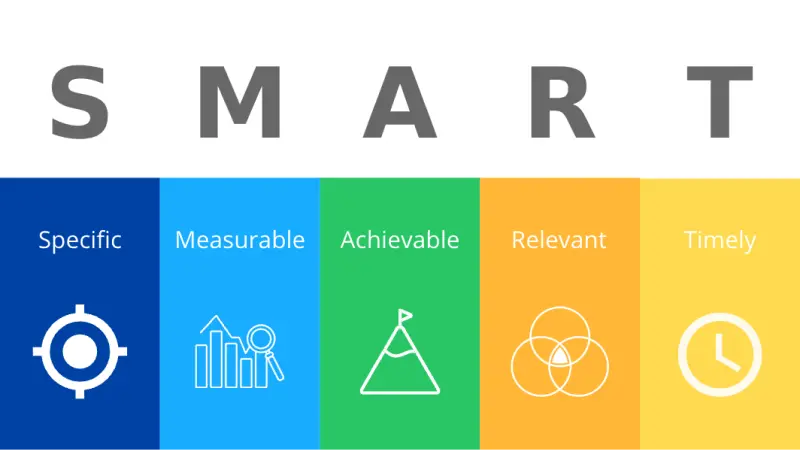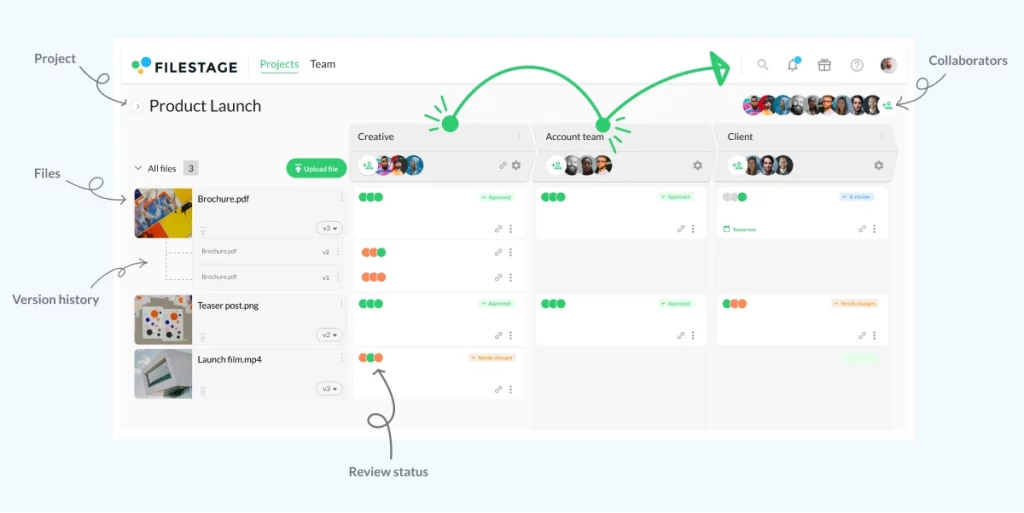It’s no secret that marketing is the key to business success. You might have the best product or service on the market, but without an effective marketing strategy to get it in front of the right audience, you’re not going to make much headway.
A recent study from Gartner revealed that the average company allocates 9.1% of total company revenue to their marketing budget. And if you’re spending that much, you want your marketing strategy to be a resounding success.
So with that in mind, let’s take an in-depth look at how to create a successful marketing strategy that attracts (and retains) customers, gives you a competitive edge in the market, and ultimately drives business success.
But first …
What is a marketing strategy?
A marketing strategy is a plan that outlines your organization’s approach to promoting your products or services. It clearly outlines your marketing goals and the tactics you plan to use to achieve them, plus all-important information regarding your target market, competition, budget, and how you plan to measure success.
So without further ado, let’s take a look at how to create an effective marketing strategy.
1. Define clear goals and objectives
The first step is to set out the goals and objectives of your marketing strategy. Keep in mind that all your goals should be in line with the overall goals of your business.
In order to define a goal, I recommend making use of our SMART goal template. The SMART method helps you define your goals by making them …
- Specific – Clearly outline what you want to achieve with your marketing efforts. For example, increasing brand awareness, boosting sales, or launching a new product.
- Measurable – Choose metrics that you can clearly measure, like website traffic, conversion rates, social media engagement, or revenue growth.
- Achievable – Make sure your goals are realistic and attainable with the resources you have available. You don’t want to set yourself up to fail!
- Relevant – This is where alignment with wider business goals comes in. Your marketing goals should align with overall business goals. The marketing strategy should contribute directly to the success of the business, whether that’s by increasing market share, entering new markets, or improving customer retention.
- Time-bound – Set a specific timeframe for achieving your goals. This could be a quarterly target, an annual objective, or tied to a specific marketing campaign. A time-bound approach adds a sense of urgency and helps you to prioritize tasks.

Setting these objectives early on will give your entire marketing strategy direction and focus, and will help you to measure its success.
Example
Here’s an example of a SMART goal:
- Specific – We want to win more leads by increasing blog traffic, creating more webinars, and increasing the advertising budget for email marketing campaigns.
- Measurable – We want to win 200 more leads per month.
- Achievable – Our number of leads increased by an average of 150 since we started using this strategy three months ago. So aiming for 200 more leads every month should be attainable with increased budget and resources.
- Relevant – By increasing the number of leads, we will drive more potential customers to our sales team and increase our revenue.
- Timely – In the next six months.
So here’s what the final SMART goal looks like:
In the next six months, we want to increase the number of leads by 1,200 by boosting our advertising budget for email marketing, growing blog traffic, and creating more content, all of which have proven to be the most effective strategies in acquiring new leads in the past.
2. Understand your target audience
Next up, take time to really get to know your target audience. Who are they? What do they like? Dig deep and conduct thorough market research to fully understand their demographics, interests, needs, and behaviors, and create detailed buyer personas to guide your marketing strategy.
These valuable insights will help you to tailor your marketing efforts to reach your ideal customers, making sure your messages resonate with those who matter. Which ultimately leads to better results.Check out our guide on buyer personas for more information and to download a free template.
Example
Here’s what a buyer persona might look like:

3. Carry out competitor analysis
Knowing your competition is key when creating marketing strategies. It helps you to understand what else is currently out there, who else is vying for your target buyer’s attention, and what marketing tactics are being used.
Start with your top competitors. Review their websites, content, ads, social media posts, and pricing to get a better understanding of what you can do to differentiate your brand and draw the attention of your target audience.
This process will help you find gaps in the market, spot trends, and figure out which marketing tactics and channels will be most effective.
Example
Imagine you’re an online flower delivery business.
Here’s what you’d do to start with:
- Explore your competitors’ websites for user-friendly features, floral arrangement options, and customer reviews.
- Look for unique features such as personalized arrangements, subscription services, or eco-friendly packaging.
- Investigate online ads to understand their seasonal promotions and key messaging.
- Check out their recent marketing campaigns to understand their storytelling and branding strategies.
- Analyze social media platforms for engagement, customer interactions, and visual appeal.
- Explore whether they harness the power of user-generated content.
- Examine their pricing strategy, including any bundled services, loyalty programs, or discounts.
Then you’d make some key observations:
- Identify any market gaps, like specific customer needs, customer segments, or occasions that competitors may not be effectively addressing with their flower delivery services.
- Note any trends, such as popular flower types, packaging preferences, or delivery options that competitors are capitalizing on.
- Determine which social media platforms or online advertising channels competitors find most effective in reaching their audience.
Et voila! These key observations can guide the development of your strategic marketing plan.
4. Develop a unique value proposition (UVP)
Armed with your objectives, your target audience knowledge, and the findings from your competitor analysis, you can develop your UVP.
All effective marketing strategies have a clear UVP: a statement that describes the unique benefit that the company, product, or service provides to its customers or clients.
What is it that sets your product or service apart from competitors? Why should customers be interested in your brand? Use your answer to these questions to create a compelling UVP. This will become the message you communicate consistently throughout your marketing strategy, across all your channels.
From here, you can start to craft clear and persuasive messaging, tailored to resonate with different segments of your audience, which captures the essence of your UVP.
Example
Here are some examples of what the UVPs might be for some well-known brands (note: the actual UVPs themselves aren’t always public-facing).
- Uber – The smartest way to get around
- Spotify – Personalized music recommendations
- Apple – Design, innovation, and simplicity
- Coca-Cola – Creating moments of happiness and connection
- Filestage – Helping you get your best work approved
Think about Coca-Cola’s TV ads and Spotify’s annual “Wrapped” release. These UVPs influence the direction and messaging of all of these brands’ marketing initiatives, as they are ultimately the crux of what makes these brands unique.
5. Choose your marketing channels
You know what you want to say, now it’s time to decide the best platforms and methods for getting that message across. The marketing channels you decide to use should be based on your target audience – where are you most likely to reach and engage them? Your choices will also depend on your product or service, your marketing goals, and what you found from competitor research.
Here are some key marketing channels to consider:
- Social media marketing – Using social media channels like Facebook, Instagram, Twitter, LinkedIn, and TikTok to reach your target audience. Get inspired with our favorite social media campaigns.
- SEO – An SEO strategy aims to improve your website’s visibility and ranking and boost organic traffic from search engines like Google and Bing.
- Content marketing – Creating blogs, articles, videos, and other content to attract and engage your target market.
- Email marketing – Communicating directly with your audience via newsletters and email campaigns.
- Traditional marketing – Advertising your company’s products and services via commercials on TV and radio, and in magazines and newspapers.
Different channels might work better for different audience segments, which is why the most successful marketing strategies opt for a multi-channel approach. By including a combination of these channels in your marketing strategy, you’ll boost your visibility, reach a wider audience, and provide more touchpoints for potential customers. It’s a no brainer!
6. Allocate budget
Now for the all important budgeting. How you use your budget will largely depend on the marketing channels you’ve chosen. Video campaigns and TV commercials, for example, will need a fairly hefty budget, whereas social media posts, SEO, and email marketing may not need much money behind them if you manage them all in-house.
Take time to allocate realistic resources to your various marketing channels (keeping some aside for a contingency fund), and then monitor and adjust the budget as the strategy unfolds. You might find you underspend in some areas and can reallocate budget to be used elsewhere.
Example
Imagine you’re launching an online fitness app with a marketing budget of $50,000. Based on your research so far, you’ve decided to go for a fully-digital marketing strategy, focusing largely on social media marketing and influencer marketing to reach your target market.
Here’s an idea of what your budget might look like:
Social media marketing – $18,000
- Facebook ads – $8,000
- Instagram ads – $6,000
- Twitter ads – $2,000
- LinkedIn ads – $2,000
Influencer collaborations – $10,000
- Collaborations with fitness influencers on YouTube, Instagram, and TikTok.
Content marketing – $10,000
- Blog posts, articles, and video content creation for the app’s website and social media channels.
Search Engine Optimization and App Store Optimization (ASO) – $4,000
- Optimizing website content and app store listings for better search visibility.
Email marketing – $4,000
- Creating targeted email campaigns for user engagement and app feature highlights.
Analytics and tools – $2,000
- Subscription to analytics platforms, social media management tools, and advertising platforms.
Miscellaneous expenses – $2,000
- Contingency fund for surprise expenses or opportunities that may pop up during the campaign.
7. Get your marketing strategy signed off
Once your marketing strategy is in a good place, it’s time to get it reviewed and approved by the necessary stakeholders. Those stakeholders will vary depending on your organization, but here’s an idea of who might need to be involved:
- CEO or CMO
- Board of directors
- Wider marketing team
- Product and sales teams
- Finance department
- Legal and compliance
Including stakeholders from the beginning and getting their approval will make your life a lot easier down the line.
Here’s how:
- It makes sure your marketing strategy aligns with broader business objectives
- It reduces resistance and holdups down the line
- It helps to identify potential risks and opportunities that might be overlooked
- It establishes a sense of accountability among stakeholders
Top tip: Use a review and approval tool like Filestage to speed up the process.

8. Monitor and adapt
Your marketing strategy has been signed off – congrats! But the work doesn’t end there. As your strategy unfolds, measure performance based on the objectives and metrics set out in step one. By tracking these metrics along the way, you’ll be able to see how well things are going, and make ad-hoc adjustments if necessary to help you achieve your goals.
Make the most of tools and dashboards like Google Analytics and HubSpot – they’ll help you keep tabs on your key metrics, and they’ll make reporting and feeding back to stakeholders that much easier too.
Example
Let’s take another look at the online fitness app we looked at in step six.
You might closely monitor app downloads, subscription sign-ups, and user engagement on social media. If metrics reveal a particular feature resonating well, you might amplify its promotion. If you see that certain content formats are performing best on social media, you might choose to create more of that content.
This ongoing analysis empowers you to make informed, real-time adjustments for a dynamic approach that leads to better results.
Final thoughts
I hope you’ve enjoyed learning the secret to creating a successful marketing strategy. Follow these steps, and your marketing strategy will be destined to help you attract potential customers (and retain existing ones), stand out from the competition, and ultimately drive business growth and success.










